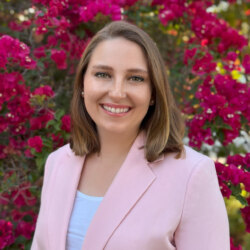Declining enrollment in traditional schools highlights California’s need for alternatives
With many California classrooms set to reopen in August, California Policy Center took a closer look at school enrollment patterns, and what they signal for the year ahead. Looking at public school enrollment data from 2014-15 to 2024-25, broken down by county, CPC conducted an analysis of the 10-year trend in California.
The data revealed that over the last decade, 45 out of California’s 58 counties experienced an overall decrease in traditional public school (TPS) enrollment. Only 13 counties had an increase in TPS enrollment during that same time span.
Overall, statewide TPS enrollment has decreased by more than 612,000 students total from 2014-15 to 2024-25. Keep in mind that during this time, California instituted public Transitional Kindergarten, boosting TPS numbers. Looking at grades K-12 only (excluding TK), enrollment has dropped by more than 762,000 students since 2014-15.
Meanwhile, public charter schools show an opposite trend. Over those same years, an impressive 38 counties had an overall increase in public charter school enrollment. Sixteen counties had decreases, and 4 counties had no change. Notable counties include:
- El Dorado County, which had 1,943 charter students in 2014-15, but over 10,000 in 2024-25;
- Kern County, which had 7,341 charter students in 2014-15, but over 23,000 in 2024-25;
- Contra Costa County, which had 5,787 charter students in 2014-15, but over 13,000 in 2024-25;
- Orange County, which had 12,016 charter students in 2014-15, but nearly 26,000 in 2024-25;
- and Riverside County, which had 18,898 charter students in 2014-15, but over 34,000 in 2024-25.
Statewide, the number of students in charter schools has increased by over 182,700 students in the last decade.
But charter schools aren’t the only growing education option. In recent years, especially since COVID-19 school shutdowns, microschools have emerged as a popular option for families who prioritize personalized learning.
Homeschooling in California has also expanded. Johns Hopkins School of Education’s Institute for Education Policy found that in 2019-20, just 0.6% of California’s K-12 students were homeschooled, which rose to 4.42% in 2023-24.
The trend is unmistakable, and California leaders should take heed. However, rather than take steps to expand school choice and education options, state legislators have repeatedly shut down Flex Accounts; attempted to overregulate homeschooling; and passed limits, restrictions, and moratoriums on new charter schools.
This year, Assembly Bill 84 is a top issue for parents across the state, which would severely impact nonclassroom-based charter schools. Nearly 300 people showed up in opposition to the bill at the Senate Education Committee hearing on July 16th. On the other hand, just 25 lined up to support the legislation, mostly union representatives. The bill was passed along to the Senate Appropriations Committee.
The root cause of California leaders’ institutional opposition to school choice? Teachers unions, which spend billions of dollars every election cycle to elect candidates — from local school boards to the legislature and beyond. These candidates, dependent on union funds for re-election, are loyal to the union agenda.
The result is they stand against education options that pull students out of the union-controlled traditional public school system. The more students that turn to education alternatives, the fewer funds overall that go to traditional public schools, which threatens the unions’ bottom line, and in turn, their political war chest.
That’s why CPC’s Parent Union advances policies that give families the power to choose what’s best for their children — and fights against bills that threaten to take choices away. By uniting parents and education reform advocates to stand up to the unions, we’re working to ensure it’s parents — not union bosses — who have the final say.
Sheridan Karras is research manager and Parent Union coordinator at California Policy Center.
Updated August 1st, 2025.
